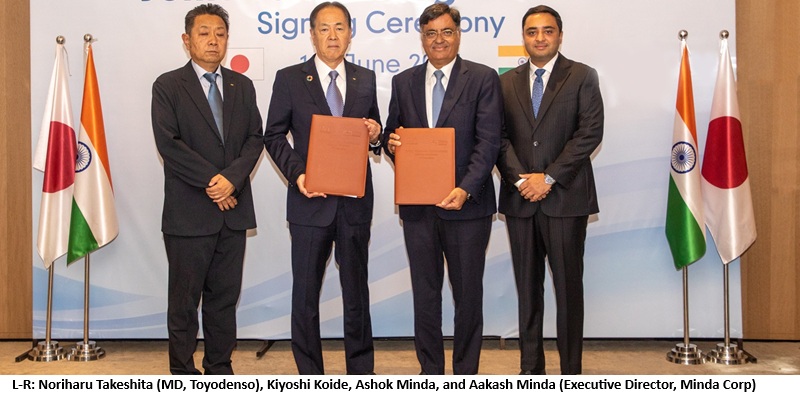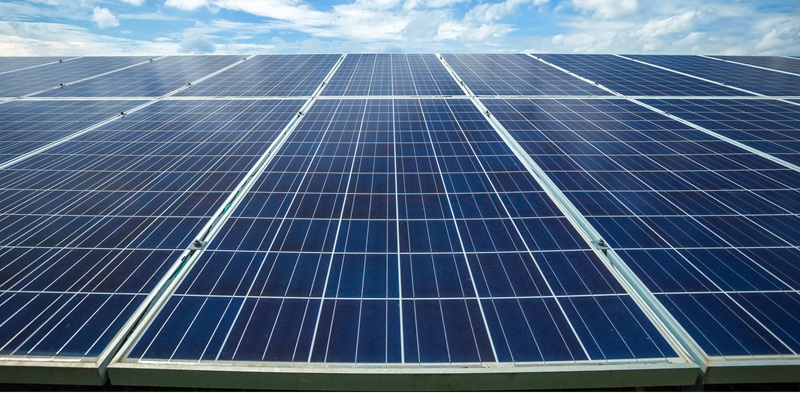Schedule a Call Back
Cost-optimised Powder Coating: Utilising Energy More Efficiently
 Technical Articles
Technical Articles- Apr 12,11
Increasing energy prices and increasing competitive pressure necessitate solutions for cost reduction in powder coating. Eisenmann presents measures for this to greatly increase plant energy efficiency and thus appreciably cut operating costs.
Driers number among the biggest energy consumers in the coating process. But a major part of the energy used is also attributable to heating the pre-treatment baths and/or air conditioning, depending on plant type. Here, measures such as optimizing the process parameters, using energy-saving components and an intelligent energy management system allow considerable savings.
Process Steps on Test
Frequently even reviewing the various process steps as regards energy-saving alternatives brings to light substantial savings potentials. Thus, for example, a temperature of the pretreatment baths that is just 5?C lower results in an energy saving of up to 15 per cent of the connected thermal load of the pretreatment plant. Another approach is the pretreatment system itself: in the case of spray pretreatment for instance, it consists of the treatment stages of degreasing, rinsing, iron phosphating, rinsing and rinsing. 
Conversion to a nanotechnology makes it possible here not only to reduce the number of stages required from five to four for stages - including the energy required for them, but also to cut investment and space requirements. Using what is called low-temperature powder paints also makes a contribution to cutting costs: a powder stoving temperature that is reduced by 20?C allows an energy saving of up to 15 per cent. It may also be worthwhile to shift the application window as regards temperature and humidity in the powder booth enclosure. If, for instance, a temperature of 23?C and a humidity of 50 per cent have been specified, these parameters can generally be shifted to 27?C respectively 65 per cent with no impairments in quality.
Consequently, less energy needs to be deployed to maintain the constant climatic conditions in the booth enclosure. This is also the case with a water drier designed as a condensation system.
Energy Savings by Plant Components
Using energy-saving plant components such as efficiency-optimised IE2 electric motors (previously EFF1) is beyond question. But, in this case, it is advisable to include the economic efficiency in one's calculations in the form of the amortisation period.
Refrigerating sets with direct evaporator pay off in the case of refrigerating plants in this respect. This is because such refrigerating sets provide far better efficiencies by comparison with cold-water machines. Likewise, free-standing coolers in cold-water machines used, for instance, to cool the powder booth enclosure, pay off within a short time. 
This is not unrestrictedly the case with frequency converters. Such units offer advantages in the case of electric motors, which are often operated in part-load mode. This is the case in particular on the drives for fans of supply air units. Depending on filter condition, they compensate for differing operating points and permit butterfly valves to be dispensed with.
A frequency converter does not offer advantages on pumps operated only in a defined operating point. By contrast, frequency converters prove to be advantageous if working with a variable capacity or a variable pressure. A frequency converter is indispensable if the spray pressure is to be set on the control console or in the control room.
The savings potential in the case of a pretreatment spray pump by changing the spray pressure by 0.5 bar is clearly shown by the example below:
Design operating point: 165 cubic metres/hour, 20 m delivery head
Power consumption: 11.8 kW
Reduced operating point: 142 cubic metres/hour, 15 m delivery head
Power consumption: 7.8 kW
Allowing for the power loss of the frequency converter, we obtain a saving of 3.8 kW or 32 percent of the energy used. The calculated saving per annum in the case of 1,800 working hours and 9 Cents/kWh is 615 euros. The investment costs of around 3,000 euros for the frequency converter are virtually amortized after five years.
Far more lucrative options are available if the frequency converter is used only to achieve energy savings. This offers effective energy management, which includes both control-system and design plant optimization and also efficient heat recovery.
Control-system Energy Saving Measures
With the control system, it is possible to achieve the greatest savings by optimised standby operation. Consequently, a rest-time control system for pumps and fans which accordingly reduces their power consumption during work breaks, transport of empty hangers and in the case of differing coating times for separated large parts cuts the power consumption significantly. One other option is process parameters matched to mass throughput. This includes, for instance, an optimally matched air-circulation rate on driers and cooling zones whose air-flow rate varies depending on workpiece temperature.
Design Plant Optimisation
On the design side, weight-optimised workholding fixtures offer an energy-saving potential that is frequently underestimated.
Eisenmann also places its bets on A-locks in order to minimise heat losses on the drier. On the variants also referred to as Camel-Back ovens, the parts are routed from below into the drier at an ascent angle of 30 degrees, pass through it and leave the oven again at entry height. The special design of the drier thus allows for the physical behavior of heat. This means that only little heat escapes when the parts enter and leave the oven by comparison with conventionally designed driers and, thus, only a low energy loss occurs in this case.
Two-stage or three-stage cascade routing of the cooling air in the cooling zone allows the total installed cooling air volume to be reduced drastically. This as well leads to appreciable savings in energy consumption.
Concepts for Heat Recovery
After exhausting all options for energy saving by optimising the process steps, components and control-system and design plant sections, it is possible to further reduce consumption by a heat recovery system. This can be implemented by the use of heat exchangers and heat pumps.
Two-stage Energy Concept for Heat Recovery
Eisenmann has developed and implemented a tailor-made, two-stage energy concept with heat exchanger and rotating air-to-air heat exchanger for heat recovery. The exhaust air of all heat emitters is utilised on this system.
The basis of this was an analysis of the energy demand of the powder painting plant featuring a six-zone spray pretreatment section, two powder booths with enclosure, power and free conveyors, infrared preheating zones and powder stoving oven with cooling zone, in addition to water driers with cooling zone. It resulted in the following breakdown:
- The lion's share of energy costs, at 82 per cent, is attributable to the thermal demand.
- Electrical energy loads, each around one third, are the pretreatment section, the driers with cooling zone and the powder booths.
- The driers dominate thermal consumption at 75 per cent.
The infrared incipient curing zone offers the greatest thermal capacity at 5,000 standard cubic meters/hour exhaust air with a temperature of around 185?C. The heat recovery system integrated by Eisenmann allows heating of the pretreatment zone. In order to do this, the exhaust air is routed via a heat exchanger in which it is cooled to a temperature of around 100?C and transported into the heating circuit of the pretreatment zone. If the pretreatment heating circuit does not require heat, the exhaust air can be routed to the second stage via a bypass past the heat exchanger. Any heating energy missing on this system is taken from the district heating network. Using waste heat from the infrared incipient curing zone to heat the pretreatment zone allows a saving of 150 kW, corresponding to approximately 16,000 euros per annum in single-shift operation. This means that the investment in the heat exchanger pays off after 1.9 years.
Stage two: heating assistance by rotating air-to-air heat exchanger
The 5,000 standard cubic meters of exhaust air per hour from the infrared zone, featuring a temperature of approximately 100?C downstream of the heat recovery section for heating the pretreatment zone, are merged with other exhaust air streams in a second step:
- Exhaust air of the water drier, 1,000 standard cubic meters/hour, 120?C
- Partial stream of the escaping air from the cooling zone, 20,000 standard cubic metres/hour, 40 to 50?C
- Extraction of the shop air beneath ceiling level, 29,000 standard cubic metres/hour, 30 to 45?C.
The total air flow rate of 55,000 standard cubic meters/hour at a temperature of approximately 55?C is then routed filtered via a rotating air-to-air heat exchanger to a fan and conveyed to the outside. In counter-flow, surrounding air is inducted, and this surrounding air also firstly passes through a filter and then passes through the rotating air-to-air heat exchanger. During this process, the supply air stream which is 47,000 standard cubic meters per hour corresponding to the total air balance heats up to around 20?C before it is discharged to the shop for heating. If necessary, subsequent heating can be realised via the heating coil. The rotating air-to-air heat exchanger allows an annual energy saving of 470.000 kWh with an operating time of around 1,800 hours per annum, corresponding to 28,000 euros per annum. The amortization period is thus only around one year.
Heat recovery by heat pumps
Waste heat at a low temperature level is produced in numerous processes. Recovering this heat using conventional heat exchangers is not economical. Eisenmann offers an appropriate alternative in such cases, using heat pumps. This option is subject to ongoing further development.
The crucial variable in this case is what is called the Coefficient of Performance (COP) of the heat pump that specifies the ratio between the electrical power supplied to the compressor and the resultant heat output. Ideally, this should be between four and five; for example, a COP value of 4.5 indicates that a heat output of 450 kW is achieved with 100 kW of supplied electrical energy. Essentially, the refrigerant used influences the COP value.
An efficient and economical concept requires a careful analysis of the plant's energy balance regardless of what options are to be used to boost energy efficiency.
EISENMANN (www.eisenmann.com) is one of the leading international suppliers of general finishing technology, materials flow automation and environmental techno-logy as well as high temperature technology. Close to 2,200 qualified employees develop new technologies and facilities for production, assembly and distribution. Engineers, technicians and specialists from various disciplines handle the planning, design, construction and start-up operation of the most advanced systems, including maintenance and system operation.
EISENMANN Anlagenbau GmbH & Co. KG, Germany. Email: info@eisenmann.com
Related Products

Heat Exchanger Scale Removal Compound -hesr-300


Universal Tapping Machine -model Tr-10/15
Tapping
Machine Tools offers universal tapping machine -model TR-10/15.
Hi There!
Now get regular updates from IPF Magazine on WhatsApp!
Click on link below, message us with a simple hi, and SAVE our number
You will have subscribed to our Industrial News on Whatsapp! Enjoy














